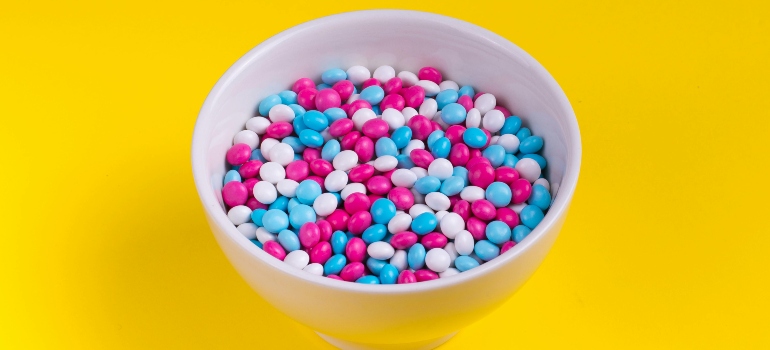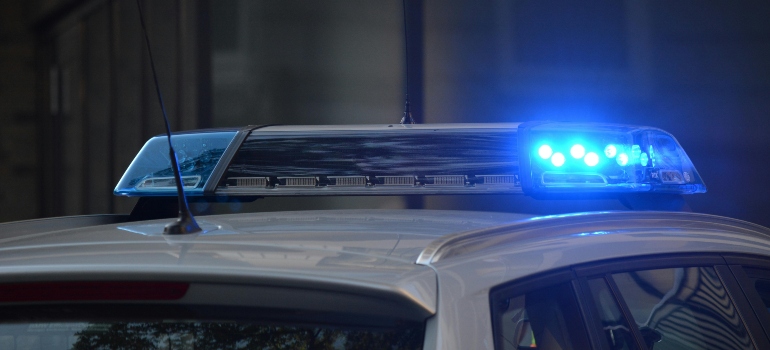What is Rainbow Fentanyl?
Fentanyl, a potent synthetic opioid, has gained notoriety for its role in the opioid crisis, causing countless overdoses and fatalities worldwide. However, a new and particularly dangerous variant has emerged on the scene: Rainbow Fentanyl. While the name might sound innocuous or even whimsical, its consequences are anything but. In this post, Little Creek Recovery will explain what Rainbow Fentanyl is, its risks, and why raising awareness and educating the public about it is important in combating this alarming trend.
Jump to Section
What is Rainbow Fentanyl?
Rainbow Fentanyl is a highly dangerous variant of the synthetic opioid fentanyl. Unlike traditional fentanyl, which is a single compound, Rainbow Fentanyl is a mixture of fentanyl combined with other substances like heroin, cocaine, or methamphetamine. This mixture gives it a diverse range of colors, hence the name “Rainbow.” Its appearance can vary widely, appearing as a powder, crystals, or even in pill form.

What sets Rainbow Fentanyl apart from traditional fentanyl is its unpredictability. Each batch can have different compositions and potency levels, making it extremely risky for users. Because of this variability, users can never be sure of what they’re getting, leading to a higher likelihood of overdose and death.
So, why was it created in the first place? One reason is its appeal to younger users. By mixing fentanyl with other substances, dealers can create a product that appears more attractive or desirable to certain demographics, particularly younger individuals. The colorful appearance and the combination with other drugs may make it seem less intimidating or dangerous. Additionally, by disguising it as something else, dealers can attract users who might otherwise avoid traditional opioids.
Ultimately, Rainbow Fentanyl is a deadly cocktail that can lure in unsuspecting users with its appearance and perceived allure. However, its unpredictable nature and potent composition make it an extremely hazardous substance, posing significant risks to anyone who comes into contact with it.
Potency and Risks
Fentanyl is much stronger than other opioids. In fact, it’s about 50 to 100 times more potent than morphine and up to 50 times more potent than heroin. This means even a tiny amount of fentanyl can have a big effect on the body, leading to a higher risk of overdose and death. Compared to drugs like morphine or heroin, fentanyl’s potency makes it much more dangerous and easier to overdose on, even for experienced drug users. Rainbow Fentanyl is significantly more potent than regular fentanyl and other opioids. Therefore, it intensifies the dangers of fentanyl.
Overdose Risks
Rainbow Fentanyl poses an extremely high risk of overdose due to its potency. Statistics show that overdose deaths involving it have been rising steadily in recent years. So, why is Rainbow Fentanyl so risky? Well, it all comes down to its strength and unpredictability. Even a tiny amount of Rainbow Fentanyl can overwhelm the body’s natural defenses. Unlike other drugs where users might have some leeway in dosing, with Rainbow Fentanyl, there’s almost no room for error.

The problem is compounded by the fact that Rainbow Fentanyl is often mixed with other substances, making it even harder for users to know what they’re getting. Dealers might cut it with things like heroin or cocaine, further increasing the risk of overdose. This variability means that each dose of Rainbow Fentanyl can be different, making it incredibly difficult for users to gauge how much is safe.
Another factor is the method of ingestion. Rainbow Fentanyl can be smoked, snorted, or injected, which can lead to rapid absorption into the bloodstream and a quicker onset of effects. This rapid onset increases the risk of overdose, as users may not have enough time to realize they’ve taken too much before it’s too late.
Accidental Ingestion
Accidental ingestion of Rainbow Fentanyl, especially by children, poses a grave risk due to its extreme potency. Even a small amount of the drug can have lethal consequences, and children are particularly vulnerable due to their smaller size and developing bodies.
One of the biggest concerns is that Rainbow Fentanyl often comes in forms that can look like harmless substances, such as pills or powders. Children may encounter these substances thinking they’re candy or some other innocuous item. Without proper awareness and precautions, they may ingest Rainbow Fentanyl unknowingly, putting themselves at serious risk of overdose.
Furthermore, Rainbow Fentanyl’s potency means that even a tiny amount accidentally ingested by a child can have devastating effects. Their bodies are not equipped to handle such potent substances, and even a small dose can lead to respiratory depression, coma, or even death.
Distribution and Detection
Distribution of Rainbow Fentanyl happens through various methods. It can be trafficked through traditional drug trafficking routes, like smuggling across borders or through postal services. Dealers may also distribute it locally, often mixing it with other drugs to increase its market appeal.
The drug comes in different forms, such as pills, powders, or even blocks. This variety makes it difficult to detect because it can resemble other harmless substances. Pills may look like prescription medication, while powders can easily be mistaken for common household items. These forms make it easier for dealers to distribute Rainbow Fentanyl discreetly, increasing the risk of accidental exposure and overdose.

Detecting Rainbow Fentanyl poses significant challenges due to its potency and the diversity of its forms. Traditional drug detection methods may not always be effective, especially if it is mixed with other substances. Even advanced detection technologies struggle to identify the drug reliably, making it difficult for law enforcement to intercept it before it reaches the streets.
Law enforcement and border control play a crucial role in combating the distribution of Rainbow Fentanyl. They work tirelessly to intercept shipments of drugs at borders, ports, and mail facilities. However, the sheer volume of packages and the ingenuity of traffickers make it an uphill battle. Additionally, cooperation between agencies and international partners is essential to effectively track and disrupt drug trafficking networks.
Treatment and Emergency Response
Naloxone, also known as Narcan, is a lifesaving medication used to reverse opioid overdoses, including those caused by Rainbow Fentanyl. It works by quickly blocking the effects of opioids in the body, restoring normal breathing and potentially saving a person’s life.
Having naloxone readily available is key, especially in communities where Rainbow Fentanyl is prevalent. Many first responders, including police officers, firefighters, and paramedics, carry naloxone with them. It’s also available without a prescription at many pharmacies, and some states even allow individuals to obtain naloxone kits directly from the pharmacy without seeing a doctor.
Training in administering naloxone is essential for anyone who may encounter a person experiencing an opioid overdose. Many communities offer free or low-cost training sessions on how to recognize the signs of an overdose and administer naloxone properly. These trainings typically cover topics like how to assemble and use naloxone kits, as well as what to do while waiting for emergency medical help to arrive.
If you suspect someone has been exposed to Rainbow Fentanyl or is experiencing an overdose, act quickly. Here are the steps to take:
- Call 911 immediately. Time is of the essence in an overdose situation, so don’t hesitate to call for help.
- Administer naloxone if you have it available and are trained to use it. Follow the instructions provided with the naloxone kit carefully.
- Perform rescue breathing if the person is not breathing or is breathing slowly. Tilt their head back, lift their chin, and pinch their nose closed while giving them two breaths. Continue this cycle until help arrives.
- Stay with the person until emergency responders arrive. Monitor their breathing and be prepared to provide any necessary information to the paramedics.
Rainbow Fentanyl Addiction Treatment
Specialized treatment for Rainbow Fentanyl addiction is needed because of the unique challenges posed by this potent and dangerous substance. Pennsylvania opioid treatment programs play a vital role in providing comprehensive care to individuals struggling with Rainbow Fentanyl addiction. Treatment centers offer a range of therapies designed to address the physical, psychological, and emotional aspects of addiction. Some of these therapies include:
- Medication-Assisted Treatment (MAT): MAT combines medications with counseling and behavioral therapies to treat substance use disorders. For Rainbow Fentanyl addiction, medications like buprenorphine or methadone may be used to help reduce cravings and withdrawal symptoms.
- Cognitive-Behavioral Therapy (CBT): CBT treatment plan for substance abuse helps individuals identify and change unhealthy thoughts and behaviors related to drug use. It teaches coping skills to manage triggers and cravings, promoting long-term recovery.
- Dialectical Behavior Therapy (DBT): DBT for substance abuse combines cognitive-behavioral techniques with mindfulness practices to help individuals regulate emotions, tolerate distress, and improve interpersonal relationships.
- Dual Diagnosis Treatment: Dual Diagnosis treatment centers in Pennsylvania address both substance use disorders and co-occurring mental health disorders simultaneously. It integrates addiction treatment with psychiatric care.

The Urgent Call for Awareness, Prevention, and Action
Understanding Rainbow Fentanyl and recognizing the signs of its use can help mitigate its harmful impact on individuals and communities. Its extreme potency and unpredictable nature present a significant threat to public health and safety. Awareness is crucial; knowing the risks associated with Rainbow Fentanyl can prevent accidental exposure and overdose. Efforts in education and outreach reduce the demand for the drug and deter its distribution. Raising awareness about the dangers of this deadly substance empowers individuals to make informed choices and seek help when needed.